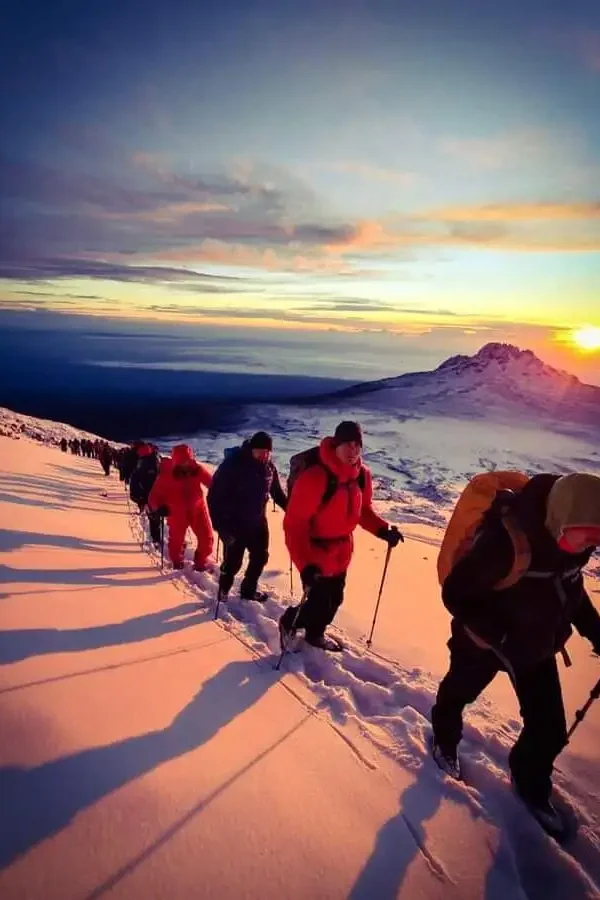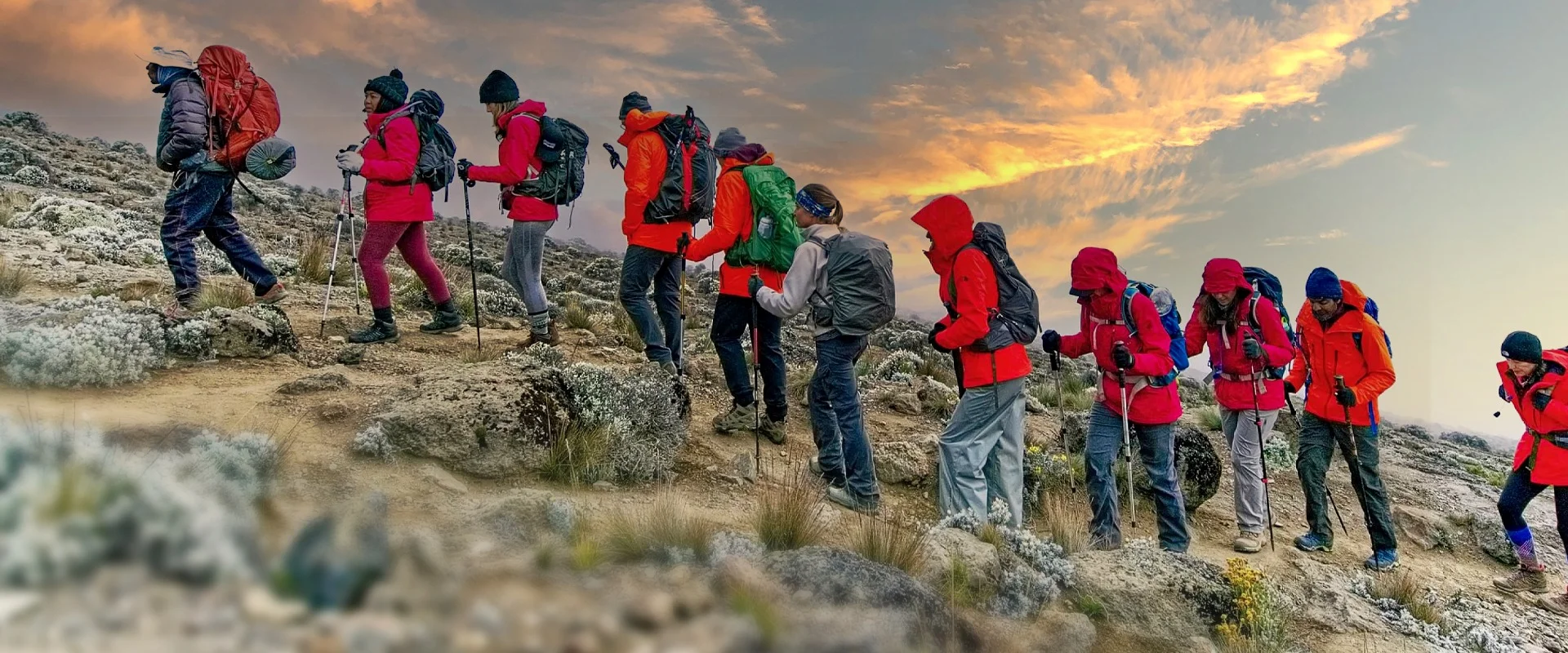Can beginners climb Kilimanjaro?
Can beginners climb Kilimanjaro? Yes and to have the best Mt. Kilimanjaro climbing experience as a beginner, you should be fully aware of the conditions, seasonal climates, costs, and requirements to prepare yourself for this challenge.
Is Kilimanjaro a difficult hike?
Climbing Kilimanjaro most days are not very hard because the trails are not steep it's mostly dealing with the altitude, however the summit night is extremely difficulty as this is the coldest, windiest section of your adventure. An ascent of 4,084ft with 49% less oxygen and a descent of nearly 6,870ft.
6 things I wish I knew before climbing Kilimanjaro
- Every single camp is cold.
- You find it hard to sleep.
- Your skin and lips take a beating.
- You need to pee all the time.
- The water in your hydration pack freezes on summit day.
You feel 'off' when high up the mountain.
- Do you need oxygen to climb Kilimanjaro?
- Kilimanjaro's altitude is a significant challenge, but climbers do not need supplemental oxygen to climb Kilimanjaro or reach the summit. To reach to the summit you use the acclimatization method of walking slowly “pole pole” climb high, sleep low.
$2000 to $3500
The average cost to climb Kilimanjaro is $2000 to $3500, the price varies from cheap, budget operators to large Western travel agents selling outsourced climbs at an inflated price. There are various, unavoidable fixed costs to any tour operator and if a climb seems too cheap, you've got to ask yourself why.
Can an unfit person climb Kilimanjaro?
You only have to be in good physical shape to climb Kilimanjaro, but there's no need to be super-fit. As there’s so many people who are not really fit but still trek mountain Kilimanjaro. as This is a trek, not a climb after all, and if you can run for 30 minutes two to three times a week, and enjoy an all-day hike at weekends, you should be fine.
Why do people fail to summit Kilimanjaro?
Firstly, the main reason people do not make on the summit of Kilimanjaro is they are not spending enough time to acclimatize to then they lack oxygen. Spending less time or days on the mountain can be the reason. Secondly, once you cross the altitude of 18,000 feet you enter the lower realm of the death zone.
Kilimanjaro expeditions are fully supported, meaning that a team of guides, cooks and porters accompany climbers on the trek to do all the work. The porters set up the tents, take down the tents, cook the food, fetch the water, and clean the campsite. Clients do not have to use their precious energy doing any labor and instead can focus on acclimatizing to the altitude and enjoying the hike.
For every client, there are around three to four personnel. This may sound excessive, until you realize what is actually brought on the mountain. First, there are the sleeping tents and the dining tents. There are sleeping pads and sleeping bags. In the dining tents are folding tables and plastic chairs, as well as lanterns, silverware, bowls, and dishes. The food is prepared in a kitchen tent, equipped with a stove, fuel, pots and pans. And this food and equipment is required for not only the clients, but for the staff serving them as well.
The staff will carry everything described above. In addition, they carry most of the clients’ gear too. Because of this, climbers do not have to carry heavy packs. With minimal gear, just enough to take care of any immediate food, water, or clothing needs, clients can focus on enjoying the hike. Typically, climbers’ packs weigh 15-20 lbs. at the beginning of the day, with three liters of water making up almost 7 lbs. of that.
The air is thinner at high altitude. This is the cause of a common illness experienced by trekkers known as acute mountain sickness (AMS). AMS is the primary reason that people fail to reach the summit of Mount Kilimanjaro. And while mild forms of AMS are expected while climbing Kilimanjaro, severe forms of AMS are potentially fatal.
AMS arises when the human body is adapting to the lower oxygen levels at high elevation. This process, known as acclimatization, creates some biological responses to combat the oxygen deficiency. More oxygen carrying red blood cells are produced. The respiration rate is increased. When these actions are not sufficient to compensate for the reduced oxygen in the environment, AMS symptoms begin to appear.
Symptoms usually start with a light headache, feelings of nausea and some fatigue. With time, these disappear as the body acclimatizes to the current elevation, before the body is retested again at a higher elevation. As long as one is recovering in this manner, it is a sign that the body is overcoming the oxygen deficiency and there is no cause for concern. In fact, some people who acclimatize quickly will not feel symptoms at all.ck.
If symptoms do not go away, and become progressively worse, AMS becomes dangerous. Two types of severe AMS – high altitude pulmonary edema (HAPE) and high-altitude cerebral edema (HACE) can lead to death. HAPE and HACE results in bleeding in the lungs and brain, respectively.
Our team conducts health checks twice daily to monitor the well-being of our clients. The health checks consist of oxygen saturation readings, a review of pulse rates, and a survey of symptoms. The data is recorded to evaluate changes over time. If the guides determine that it is too risky to continue, you will be escorted down the mountain for your safety. We carry bottled oxygen and a portable stretcher on every climb, and can coordinate an evacuation on foot or by helicopter in case of a medical emergency.




A few months have passed, and I am still immersed in a happy and wonderful safari trip, with beautiful grasslands, lazy lions, and clever zebras... I am very grateful to the enthusiastic Marko, who planned based on my needs